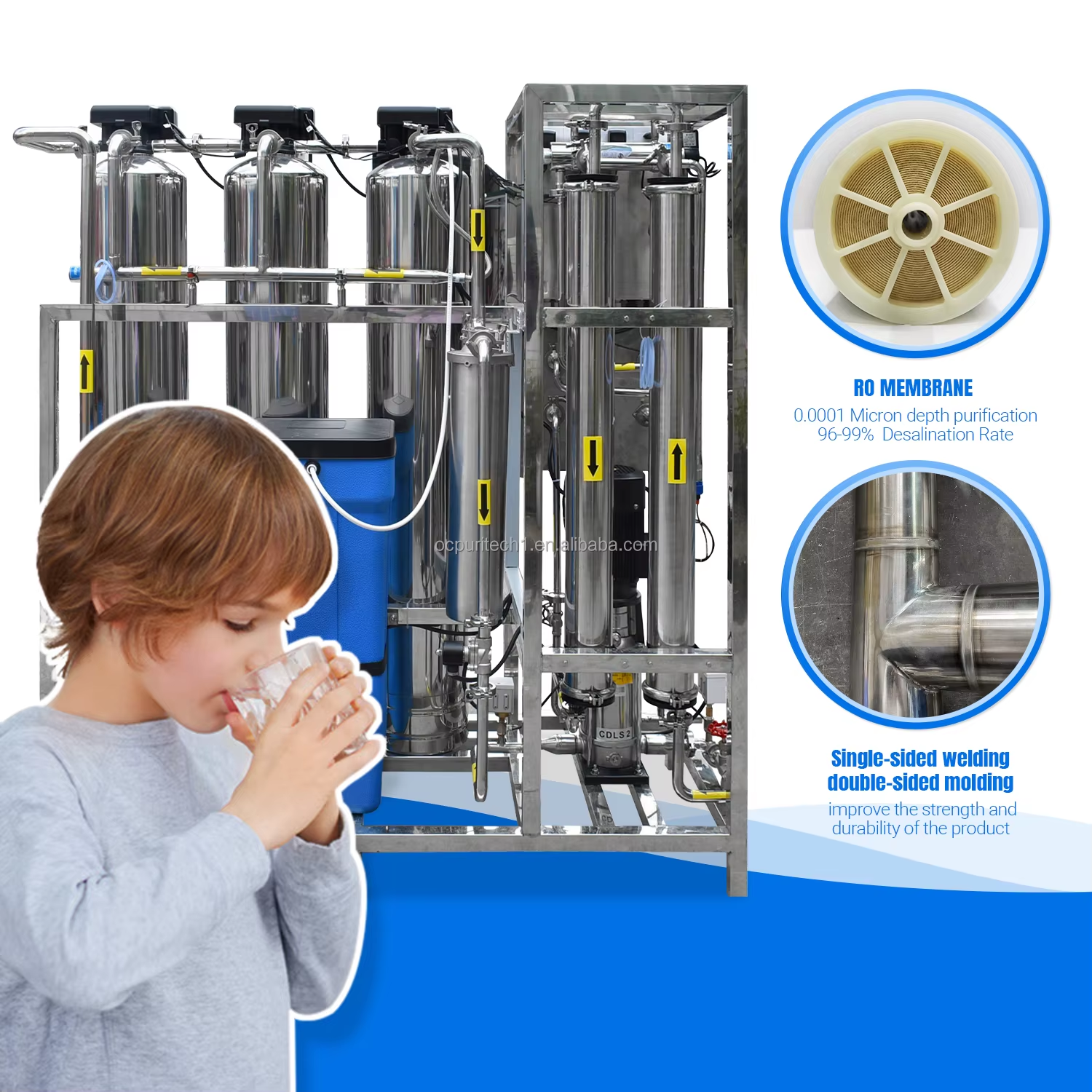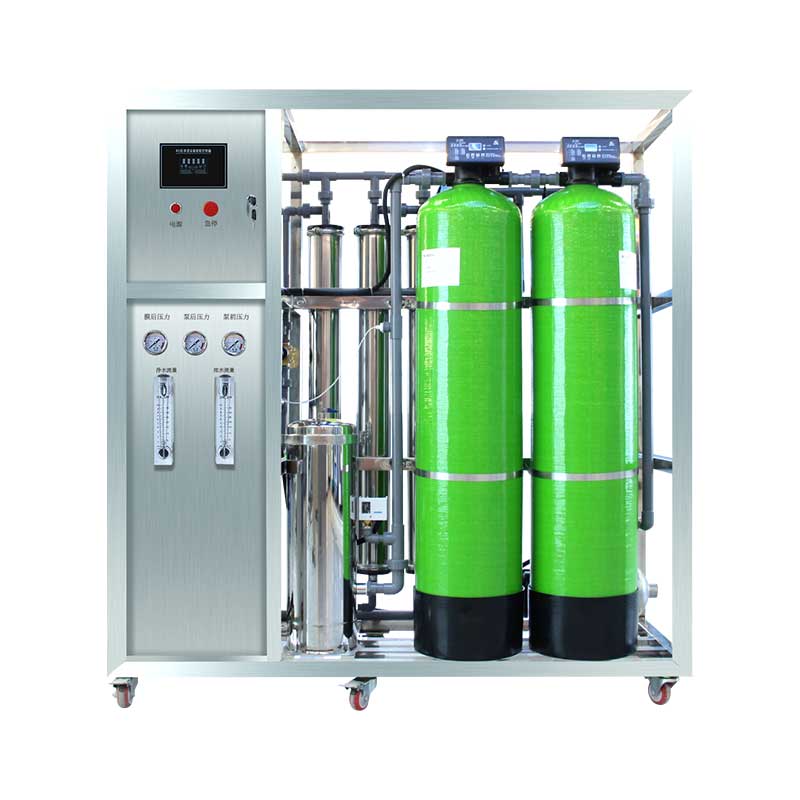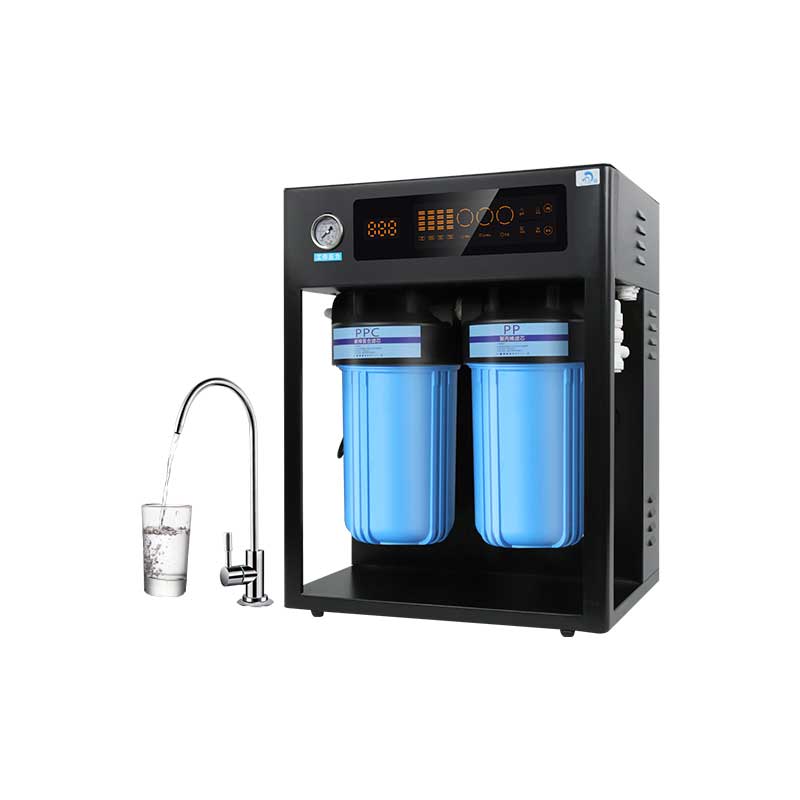How does a 1000lph industrial water purifier with quartz sand, activated carbon and resin work?
2025-05-14 04:58
How does a 1000lph industrial water purifier with quartz sand, activated carbon and resin work?
Industrial water purifiers (1000 liters/hour flow rate) combine a multi-media filtration system of quartz sand, act
ivated carbon and ion exchange resin, usually using graded treatment to gradually remove impurities, organi
c matter and ions in the water. The following is its working principle and process:
1. Quartz sand filter (primary filtration)
Function: Remove suspended matter, silt, colloids, large particle impurities (such as rust, algae, etc.) in water
.
Working principle:
The quartz sand layer intercepts particles through mechanical screening and adsorption.
The water flows from top to bottom through quartz sand of different particle sizes (coarse → fine), filtering st
ep by step.
Maintenance: Regular backwashing (water or air-water mixed backwashing) to discharge the trapped impuri
ties.
2. Activated carbon filter (intermediate treatment)
Function:
Adsorb organic matter, residual chlorine, odor, pigments (such as pesticides, volatile phenols, etc.) in water.
Partially remove heavy metals (such as mercury, lead) and colloids.
Working principle:
The microporous structure of activated carbon purifies water through physical adsorption and chemical adso
rption.
Residual chlorine (Cl₂) reacts with activated carbon to generate chloride ions (Cl⁻) to avoid subsequent resin
poisoning.
Maintenance: Regular backwashing, activated carbon needs to be replaced after saturation (about 1-3 years).
3. Ion exchange resin (deep treatment)
Function: Remove calcium and magnesium ions (softening), heavy metal ions (such as copper and iron) in wa
ter, and reduce hardness.
Working principle:
Na⁺ or H⁺ on the resin is exchanged with Ca²⁺ and Mg²⁺ in the water to generate softened water.
After the resin is saturated, it needs to be regenerated with NaCl solution (salt box) or acid/alkali (divided into
cation resin/anion resin).
Maintenance: Regular regeneration is required, and the resin life is about 3-5 years.
4. Subsequent treatment
Precision filter: 5~10μm filter element intercepts residual tiny particles.
Reverse Osmosis (RO): If the water quality requirements are higher (such as conductivity ≤ 10μS/cm), RO me
mbranes can be added.
System workflow
Raw water → Quartz sand filter → Activated carbon filter → Resin softener → Outlet
(Intercepted particles) (Adsorbed organic matter) (Removed ions)
Key parameters
Flow rate: 1000L/h (need to match the pump head and pipeline pressure).
Tank size: Designed according to the filter volume (such as diameter 400~600mm, height 1.5~2m).
Backwash frequency: Depending on the water quality, backwashing is usually done once every 24~72 hours
.
5. Precautions
Activated carbon needs to be replaced regularly to avoid bacterial growth.
Resin needs to be protected from oxidation (residual chlorine needs to be removed in advance).
When the raw water quality is poor, pretreatment (such as flocculation, multi-media filtration) is required.
This combined system can effectively treat water sources with high turbidity, high organic matter or high har
dness. The specific design needs to adjust the filter media ratio and regeneration method according to the w
ater quality report.
Get the latest price? We will reply as soon as possible (within 12 hours)














